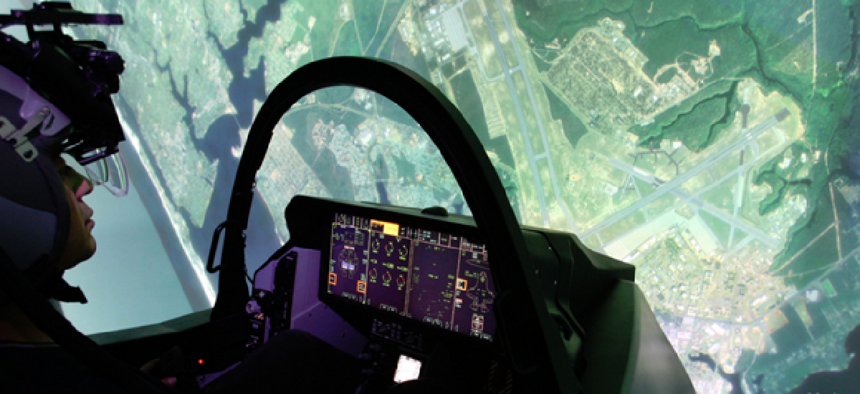Man-machine combo key to future Defense innovation


Connecting state and local government leaders
Deputy Secretary of Defense Robert Work said future automation will increasingly include human-machine collaboration.
Despite indications that robots and autonomous machines could replace humans for many duties on the battlefield, the military sees the real potential in human-machine collaboration.
“When you’re operating against a cyberattack or …you [need] … a learning machine that helps you solve that problem right away,” Deputy Secretary of Defense Robert Work recently told an audience at the annual Reagan National Defense Forum. The combination of human insight and speed-of-light machine analysis and response can give the United States a key advantage. “The way we will go after human-machine collaboration is allowing the machine to help humans make better decisions faster,” Work said.
Using the example of the F-35 fighter jet, Work described it as “a flying sensor computer that sucks in an enormous amount of data, correlates it, analyzes it and displays it to the pilot on his helmet.” It will be a “war winner,” he said, because “it is using the machine to help the human make better decisions.”
Discussions of human-machine collaboration often refer to the early chess-playing computers. In 1997, IBM’s supercomputer Deep Blue beat chess grandmaster Garry Kasparov -- the first defeat of a current world chess champion to a computer under tournament conditions. Then in 2005, the tables turned when “two amateur chess players using three personal computers won $20,000 in a chess tournament against a field of supercomputers and grandmaster,” Work said.
That somewhat surprising result supports the popular theory that if you combine “a mediocre human player with a mediocre chess computer, that combination can beat any grandmaster and any top-of-the-art chess computer,” Jason Matheny, director of the Intelligence Advanced Research Projects Activity said at the recent 2015 Defense One Summit. “So there is something to be said for figuring out the best way of pairing analysts with machines… [C]ertainly we can find ways to make both the analyst and the computer better as a team.”
The concept of human and machine teaming in the military has been considered by others as well. In a report that examined warfare in 2050 one take away was that robots and humans will continue to interact with each other. “Battle rhythm will increase to the point that, in many instances, humans will no longer be able to be ‘in the loop,’ but will instead need to operate ‘on the loop.’”
And more changes are in the offing. The younger generation of warfighters will drive innovation and creative thinking in the future, Work said -- not because the more senior officers lack creativity, but because the younger generation grew up in an “iCombat” environment.
“What will happen is that our senior military officers who know combat at the campaign level -- something our junior officers don't know -- will be able to make the leap to the operational concepts and organizational constructs,” he said. “But if we can tap into the captains and majors and lieutenants who have grown up in this world, and we can manage that creativity together…we will kick ass.”
NEXT STORY: Tribes get access to national crime databases




